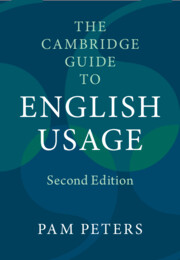Refine search
Actions for selected content:
3390217 results for 텔레@coinsp24이더리움판매문화상품권91%이더리움판매문화상품권91%
Introduction to Conservation Genetics and Genomics
- Coming soon
-
- Expected online publication date:
- August 2026
- Print publication:
- 31 August 2026
-
- Textbook
- Export citation
Embers of Reason
- The Secular Imagination and the Contemporary Indian Documentary
- Coming soon
-
- Expected online publication date:
- July 2026
- Print publication:
- 01 April 2027
-
- Book
- Export citation
The Afterlife of the Mausoleum of Halicarnassus
- Re-conceiving an Ancient Wonder in Early Modern Europe
- Coming soon
-
- Expected online publication date:
- July 2026
- Print publication:
- 31 July 2026
-
- Book
- Export citation

The Cambridge Guide to English Usage
- Coming soon
-
- Expected online publication date:
- July 2026
- Print publication:
- 31 July 2026
-
- Book
- Export citation
Roman Rural Archaeology
- Society, Economy, and Culture
- Coming soon
-
- Expected online publication date:
- July 2026
- Print publication:
- 31 July 2026
-
- Book
- Export citation
Nefarious Reflections
- On Narcissism and Crime
- Coming soon
-
- Expected online publication date:
- June 2026
- Print publication:
- 30 June 2026
-
- Book
- Export citation
British Black and Asian Poetry
- Race, Aesthetics and Politics 1970–2023
- Coming soon
-
- Expected online publication date:
- June 2026
- Print publication:
- 30 June 2026
-
- Book
- Export citation
Contemporary Worldviews
- A Comparative Study
- Coming soon
-
- Expected online publication date:
- June 2026
- Print publication:
- 30 June 2026
-
- Book
- Export citation
An Introduction to Gulf Politics
- Coming soon
-
- Expected online publication date:
- June 2026
- Print publication:
- 30 June 2026
-
- Textbook
- Export citation
Scientific Theories of Consciousness
- Coming soon
-
- Expected online publication date:
- June 2026
- Print publication:
- 30 June 2026
-
- Book
- Export citation
Revolutionary Shi'i Modernism in Iraq
- The Thought and Legacy of Muhammad Baqir al-Sadr
- Coming soon
-
- Expected online publication date:
- June 2026
- Print publication:
- 30 June 2026
-
- Book
- Export citation
Causal Processes and their Warrant
- Coming soon
-
- Expected online publication date:
- June 2026
- Print publication:
- 30 June 2026
-
- Book
- Export citation
Daisy Miller and Other Tales, 1874–1879
- Coming soon
-
- Expected online publication date:
- June 2026
- Print publication:
- 30 June 2026
-
- Book
- Export citation
Teaching America
- Reflective Patriotism in Schools, College, and Culture
- Coming soon
-
- Expected online publication date:
- May 2026
- Print publication:
- 31 May 2026
-
- Book
- Export citation

Celestial Mechanics
- Classical and Modern Methods
- Coming soon
-
- Expected online publication date:
- May 2026
- Print publication:
- 31 May 2026
-
- Book
- Export citation

The Psychology of Place
- Rebuilding Sense of Place in a Post-Colonial World
- Coming soon
-
- Expected online publication date:
- May 2026
- Print publication:
- 31 May 2026
-
- Book
- Export citation
Financial Enterprise Risk Management
- Coming soon
-
- Expected online publication date:
- May 2026
- Print publication:
- 31 May 2026
-
- Book
- Export citation
Half a Century of Supergravity
- Bridging between Einstein and the Quantum
- Coming soon
-
- Expected online publication date:
- May 2026
- Print publication:
- 31 May 2026
-
- Book
- Export citation
All of Regression
- Coming soon
-
- Expected online publication date:
- May 2026
- Print publication:
- 31 May 2026
-
- Book
- Export citation
The Irish Pope
- Paul Cullen, 1803-1878
- Coming soon
-
- Expected online publication date:
- May 2026
- Print publication:
- 31 May 2026
-
- Book
- Export citation
